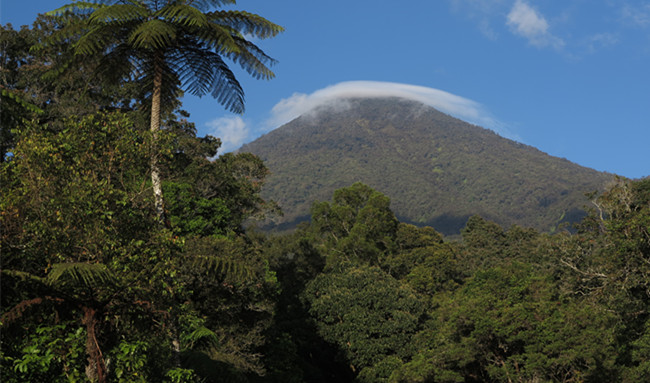 |
|
Clouds curl along the top of Mount Pangrango in Gede-Pangrango National Park in Cibodas. [Photo by Chen Liang/China Daily] |
A four-day jaunt in Java features towering trees, birds and other exotic wildlife, Chen Liang reports Chen Liang
When many Chinese think of Indonesia their minds fly to the island of Bali. To the better informed and the more traveled the sprawling archipelago looms a lot larger, and in addition to Bali the island of Lombok and the ancient city of Yogyakarta in Java may spring to mind. Even the country's capital, Jakarta, has long been off the radar for Chinese tourists.
It may come as a surprise that Indonesia offers tourist visas to Chinese citizens free of charge, which is just one reason, even if among the least important, why the country ought to appeal to Chinese travelers.
When I first went to Indonesia five years ago, I visited Yogyakarta and Bali. My second trip last month took me to the remote Maluku Islands, a three-hour flight from Jakarta, but before settling down in the the Malukus for a few days I spent three days in West Java.
As a nature lover I prefer natural attractions such as forests and mountains to modern cities or historical towns. Only 60 kilometers south of Jakarta, Gunung Gede-Pangrango National Park seemed a natural choice. The twin volcanoes of Gunung (Mount) Gede and Gunung Pangrango are located in the park, which luxuriates in 150 square km of tropical forest that is home to about 250 species?? of birds, about 30 indigenous to Java, and mammals such as leopards, Javan gibbons and Javan langurs (also known as ebony leaf monkeys).
So after arriving in Jakarta from Ternate, one of the Maluku islands, in the morning, I hired a taxi to take me to Cibodas, a village at the foot of the national park, so I would have more time up my sleeve for my ultimate destination. I reached Freddy's Homestay in Cibodas, in which I had booked a room, about 3 pm.
The hostel has very basic rooms and a communal bathroom. After a break in the dining/sitting room and asking Freddy to prepare dinner for me at 6:30 pm I headed out to Cibodas Botanical Garden at 4 pm. The entrance, a 10-minute walk from the hostel, is beside the entrance to the national park.
The garden presented a pleasant surprise. Stretching in a broad valley at the foot of Mount Gede, it is expansive, well designed and beautiful. Everywhere you look there is a towering tree of this species or that. Flocks of birds feed in the canopies, and you know that not because you can see them - you can't - but because your ears are assaulted with the sound of their incessant chirping.
Broad lawns and overgrown shrubs cover the gentle slopes. At the bottom of the valley is a flat lake with a fountain at its center. Clean, clear water is channeled into the lake along a stream leading to Cibodas Waterfall, which tumbles down a cliff covered by different species of ferns.
|
|
|
|
|
|
|
|
